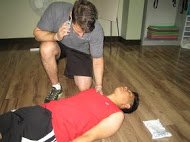Bomb threats are defined as threats, whether verbal or written, to ignite an explosive. These explosions often lead to multiple injuries, death, and property damage. Although majority of these threats are hoaxes, one can never be too sure until safety is guaranteed by the security. However, some of these bomb threats are not just used as pranks but can be used as part of crimes, such as aircraft high jacking, extortion, robbery, arson, or school/ company attack. Most bomb explosions are often executed without warnings.
What to Do in Bomb Threats
Most schools and other types of institutions have their own evacuation plan depending on the reliability of the threat. The following action is generally recommended in cases of bomb threats:
- Follow evacuation plan as prepared by the institution.
- While leaving, check the area for unfamiliar items. If there are suspicious items, report to authorities immediately.
- Leave the doors and windows open. Do not touch the light switches.
- Use the stairs and never use elevators.
- Move away from the building and do as instructed by the emergency responders.
Receiving Telephone Bomb Threats
Majority of bomb threats are either verbal or written, but current technology allows threats to be sent through text messages or even electronic mails. In cases that threats are received through the telephone, the receiver is recommended to take the following actions:
- Stay calm and write down the details immediately. Write down the threat word per word. This information would greatly help the police in their investigation. If possible, write down the threat while on the telephone with the caller.
- Pay close attention to details. Ask the caller the following details: when is the bomb going to explode, where is the bomb at the moment, how does it look like, the specific type of bomb, who placed the bomb and why, name of the caller and address, etc.
- Record the following details: time and date call was received, length of call, telephone number at which the call was received, and name of the receiver, etc.
- Try to note the gender, age and race of the caller. Also, observe the language of the caller, whether irrational, foul, well-spoken (educated), taped, etc., and the voice of the caller, whether normal, accented, crying, stressed, anxious, etc.
When Bomb Threats Turn Into Explosions
Although most are hoaxes, these can easily turn into a very dangerous situation when bomb threats actually turn into explosions. In case this happens, the following should be done:
- Find sturdy furniture where one can take cover. If directed by emergency responders, evacuate the building.
- Do not stay close to windows.
- Do not light matches.
- Move to a safe location.
- Do not use elevators at all times and use stairs only.
- Once safe, check for injuries and wait for an emergency responder to administer first aid.

In cases of bomb threats, one should always remain and never panic. Enroll in First Aid Courses to always be prepared for emergencies, such as bomb threats.
Online Sources:
http://www.midland.edu/students/student_services/police/prevention_bomb.php
